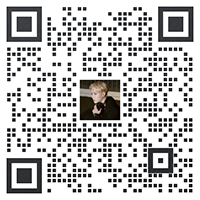此部分共有10个未完成的对话,针对每个对话中未完成的部分有4个选项,请你从A、B、C、D四个选项中,选出可以填入空白处的最佳选项,并用铅笔将答题卡上的相应字母涂黑。示例〔A〕〔B〕〔C〕〔D〕
1. — I haven’t seen Billy for 10 years.
— ____________
A. Either have I. B. So have I.
C. Haven’t I. D. Neither have I.
2. — What would you like, tea or coffee?
— ____________
A. Yes, I would. B. Coffee, please.
C. Yes, please. D. It’ very nice.
3. — Do you know who telephoned me?
— ____________
A. I heard it was Sally. B. Yes, I remember it now.
C. No, I didn’t phone you. D. Yes, I know you well.
4. — Excuse me, how far is the airport from here?
— ____________
A. You can take a taxi. B. It’s about thirty miles.
C. I’ll fly to Sydney. D. It’s only six hundred dollars.
5. — I’ve got two tickets for the match. Shall we go and watch it together?
— ____________
A. The tickets must be expensive. B. The match must be exciting.
C. Why not? Let’s go. D. The place is too far away.
6. — Could I borrow your CD of English songs?
— ______________
A. No, I am not available. B. I’m sorry. It’s not at hand now.
C. It’s very kind of you. D. Thank you very much.
7. — Hello, Sally. How’s everything?
— _____________
A. Good for you. B. Oh, I agree.
C. That’s right. D. Just so-so.
8. — Waiter!
— ____________
— I can’t eat this. It’s too salty.
A. Yes, sir? B. What? C. All right? D. Pardon?
9. — I’ll be away on a business trip. Would you mind looking after my cat?
— Not at all. ____________
A. I’ve no time. B. I’d rather not. C. I’d like it. D. I’d be happy to.
10. — I’m taking my driving test tomorrow.
— ____________
A. Cheers! B. Congratulations!
C. Come on! D. Good luck!
第二部分:阅读理解 (共20小题;每小题2分,满分40分)
此部分共有4篇短文,每篇短文后有5个问题,每个问题后有4个选项,请你从A、B、C、D四个选项中,选出可以填入空白处的最佳选项,并用铅笔将答题卡上的相应字母涂黑。示例〔A〕〔B〕〔C〕〔D〕
Passage 1
There are many famous museums throughout the world where people can enjoy art. Washington, D.C. has the National Gallery of Art; Paris has the Luvre; London, the British Museum. Florida International University (FIU) in Miami also shows art for people to see. And it does so without a building, or even a wall for its drawings and paintings.
FIU has opened what it says is the first computer art museum in the United States. You don’t have to visit the University to see the art. You just need a computer linked to a telephone.
You can call the telephone number of a University computer and connect your own computer to it. All of the art is stored in the school computer. It is computer art produced electronically (通过电子手段) by artists on their own computers. In only a few minutes, your computer can receive and copy all the pictures and drawings.
Robert Shostak is director of the new computer museum. He says he starts the museum because computer artistes had no place to show their work.
A computer artist could only record his pictures electronically and send the records or floppy discs (软盘), to others to see on their computers. He could also print his pictures on paper. But to print good pictures on paper, the computer artist needs an expensive laser(激光)printer.
Robert Shostak says the electronic museum is mostly for art or computer students at schools and universities. Many of the pictures in the museum are made by students. Mr. Shostak said the FIU museum would make computer art more fun for computer artists because more people can see it. He says artists enjoy their work much more if they have an audience. And the great number of home computers in America could mean a huge audience for the electronic museum.
11. The main purpose of this passage is to give information about_____________.
A. famous museums throughout the world
B. an electronic art museum in Miami, U.S.A.
C. art exhibitions in Florida International University
D. latest development of computer art
12. To see the art in FIU museum, your special needs include_____________.
A. floppy discs
B. a computer and a printer
C. pictures and drawings on paper
D. a computer connected to the museum by a telephone line
13. What are stored in this museum?
A. Paintings drawn by means of the computer.
B. Different styles of paintings.
C. Old paintings.
D. Drawings done by art students of FIU.
14. The museum was started when___________.
A. Robert Shostak wanted to do something for computer scientists
B. Robert Shostak wanted to help computer artists
C. art students needed better places to show their works
D. computer scientists wanted to do something about art
15. The word “audience” in the last paragraph refers to ___________.
A. art students B. computer owners
C. exhibits in the museum D. those who will enjoy art
Passage 2
“Cool” is a word with many meanings. Its old meaning is used to express a temperature that is a little bit cold. As the world has changed, the word has had many different meanings.
“Cool” can be used to express feelings of interest in almost anything.
When you see a famous car in the street, maybe you will say, “It’s cool.” You may think, “He’s so cool,” when you see your favourite footballer.
We all maximize (扩大) the meaning of “cool”. You can use it instead of many words such as “new” or “surprising”. Here’s an interesting story we can use to show the way the word is used. A teacher asked her students to write about the waterfall (瀑布) they had visited. On one student’s paper was just the one sentence, “It’s so cool.” Maybe he thought it was the best way to show what he saw and felt.
But the story also shows a scarcity (缺乏) of words. Without “cool”, some people have no words to show the same meaning. So it is quite important to keep some credibility (可信性). Can you think of many other words that make your life as colourful as the word “cool”? I can. And I think they are also very cool.
16. We know that the word “cool” has had ________.
A. only one meaning B. no meanings
C. many different meanings D. the same meaning
17. In the passage, the word “express” means “________”.
A. see B. show C. know D. feel
18. If you are _______ something, you may say, “It’s cool.”
A. interested in B. angry about
C. afraid of D. unhappy with
19. The writer takes an example to show he is ________ the way the word is used.
A. pleased with B. strange to
C. worried about D. careful with
20. In the passage, the writer suggests(暗示)that the word “cool”________.
A. cannot be replaced by other words
B. usually means something interesting
C. can make your life colourful
D. shouldn’t be overused
Passage 3
Soldiers and other military people wear uniforms with various other symbols to indicate their status. But in the business world everyone wears more or less similar suits, and you cannot tell at a glance who ranks higher or lower than another. So how do people in the business world show their superiority?
An attempt to study this was made by two researchers using a series of silent films. They had two actors play the parts of an executive (经理) and a visitor, and switch roles each time. The scene had one man at his desk playing the part of an executive, while the other, playing the part of a visitor, knocks at the door, opens it and approaches the desk to discuss some business matter.
The audience watching the films was asked to rate the executive and the visitor in terms of status. A certain set of rules about status began to emerge from the ratings. The visitor showed the least amount of status when he stopped just inside the door to talk across the room to the seated man. He was considered to have more status when he walked halfway up to the desk, and he had the most status when he walked directly up to the desk and stood right in front of the seated executive.
Another thing that affected the status of the visitor in the eyes of the observers was the time between knocking and entering. For the seated executive, his status was also affected by the time between hearing the knock and answering. The quicker the visitor entered the room, the higher status he had. The longer the executive took to answer, the higher status he had.
21. The experiment designed by the two researchers aimed at finding out _________.
A. how business is conducted by an executive and a visitor
B. how to tell the differences between an executive and a visitor
C. how to tell businessmen at a glance
D. how businessmen indicate their status
22. Which of the statements can best sum up the passage?
A. The executive has a higher status than the visitor.
B. Military people wear uniforms but the businessmen do not.
C. A study revealing a set of rules about the status of businessmen.
D. It is a good method to use a series of silent film in research.
23. The closer the visitor approaches the executive, _________.
A. the less it affected his status B. the lower his status
C. the more it affected his status D. the higher his status
24. The longer the seated man was in answering the knock, _____________.
A. the higher his status B. the less it affected his status
C. the lower his status D. the more it affected his status
25. Which statement is NOT true?
A. Soldiers wear uniforms with various symbols so that one can tell their status at a glance.
B. In the experiment, one actor played the executive while the other played the seated man.
C. Business people wear similar suits.
D. The audience watching the film rated the executive and the visitor in terms of status.
Passage 4
For any Englishman, there can never be any discussion as to who is the world’s greatest dramatist (剧作家). Only one name can possibly suggest itself to him: that of William Shakespeare. Every Englishman has some knowledge, however slight, of the work of our greatest writer. All of us use words, phrases and quotations from Shakespeare’s writings that have become part of the common property of the English-speaking people. Most of the time we are probably unaware of the source of the words we used, rather like the old lady who was taken to see a performance of Hamlet and complained that it was full of well-known proverbs and quotations.
Shakespeare, more perhaps than any other writer, makes full use of the great resources of the English language. Most of us use about five thousand words in our normal use of English; Shakespeare in his works used about twenty-five thousand.
There is probably no better way for a foreigner to appreciate the richness and variety of the English language than by studying the various ways in which Shakespeare used it. Such a study is well worth the effort (it is not, of course, recommended to beginners) even though some aspects of English usage, and the meaning of many words, have changed since Shakespeare’s day.
26. English people ____________.
A. have never discussed who is the world’s greatest dramatist
B. never discuss any issue concerning the world’s greatest dramatist
C. are sure who is the world’s greatest dramatist
D. do not care who is the world’s greatest poet and dramatist
27. Every Englishman knows ______________.
A. more or less about Shakespeare
B. Shakespeare, but only slightly
C. all Shakespeare’s writings
D. only the name of the greatest English writer
28. Which of the following is true?
A. We use all the words, phrases and quotations from Shakespeare’s writings.
B. Shakespeare’s writings have become the property of those who are learning to speak English.
C. It is likely to be true that people often do not know the origins of the words they use.
D. All the words people use are taken from the writings of Shakespeare.
29. What does the word “proverb” mean?
A. Familiar sayings. B. Shakespeare’s plays.
C. Complaints. D. Actors and actresses.
30. Why is it worthwhile to study the various ways in which Shakespeare used English?
A. English words have changed a lot since Shakespeare’s time.
B. By doing so one can be fully aware of the richness of the English language.
C. English words are now being used in the same way as in Shakespeare’s time.
D. Beginners may have difficulty learning some aspects of English usage.

湖南专升本声明
(一)由于考试政策等各方面情况的不断调整与变化,本网站所提供的考试信息仅供参考,请以权威部门公布的正式信息为准。
(二)本网站在文章内容来源出处标注为其他平台的稿件均为转载稿,免费转载出于非商业性学习目的,版权归原作者所有。如您对内容、版权等问题存在异议请于我们联系,我们会及时处理。
文章来源于网络,如有侵权,请联系删除



























 福利领取
福利领取  成考报名
成考报名  国开报名
国开报名  教师资格证
教师资格证  专升本报名
专升本报名  自考报名
自考报名 





